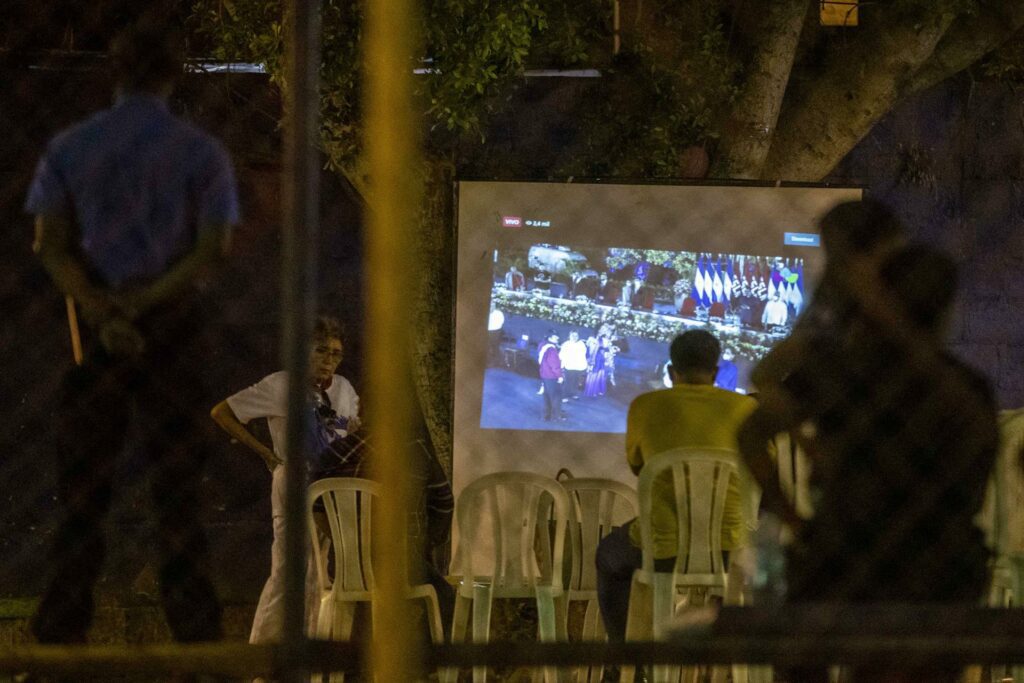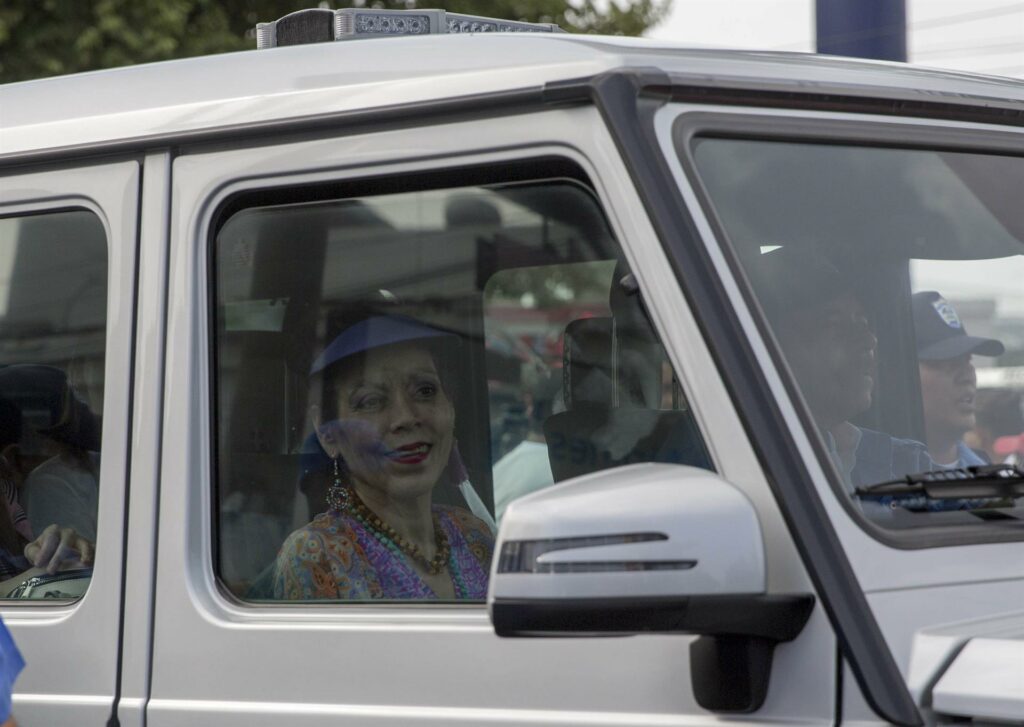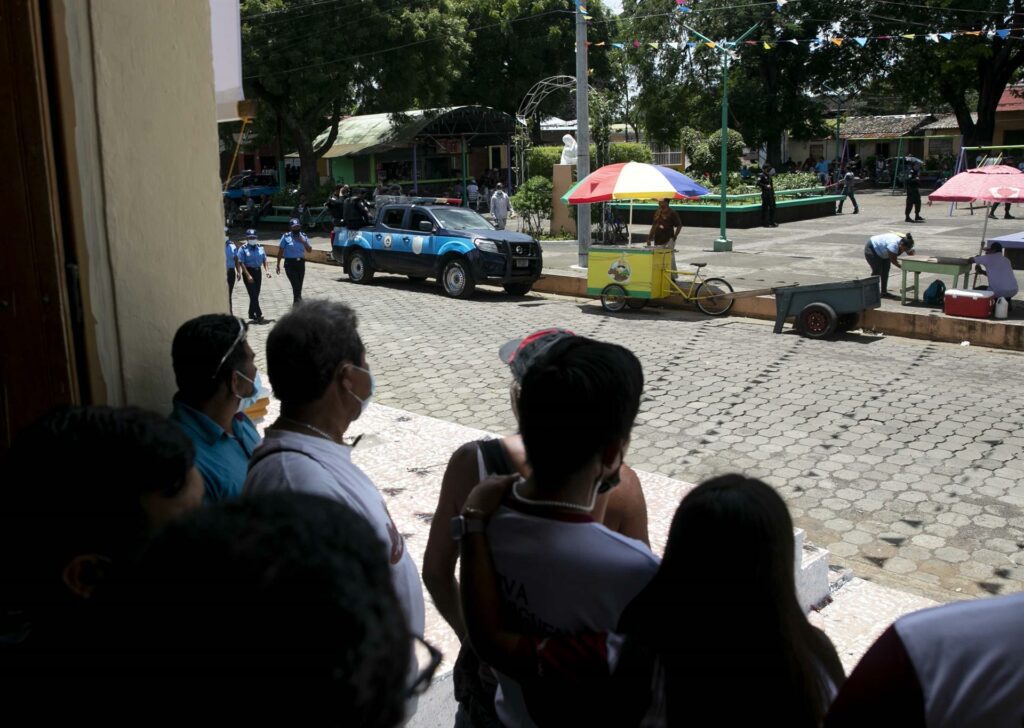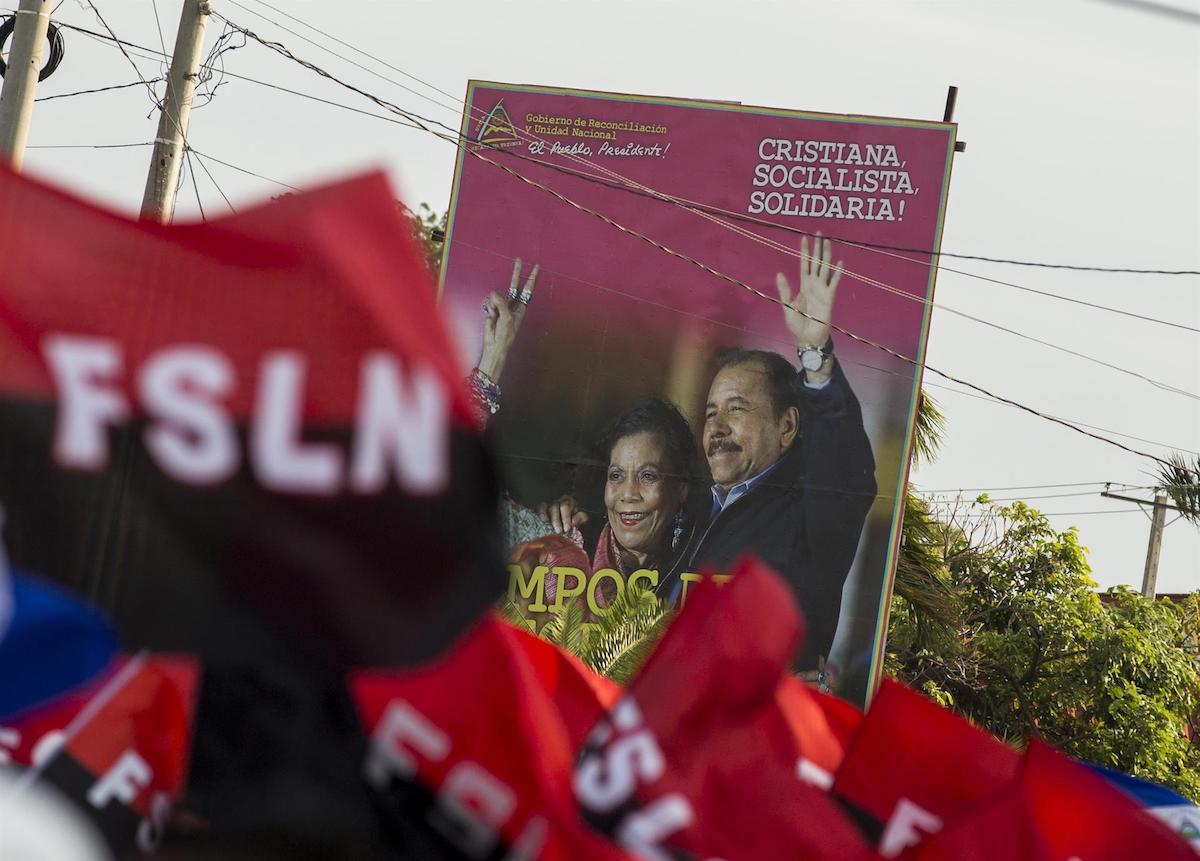The Sandinista party leaders, Daniel Ortega and Rosario Murillo, will celebrate, for the third consecutive year, the anniversary of the Sandinista Revolution with a closed-circuit event and in a square next to their residence, in the neighborhood of El Carmen in Managua. The recently renovated Plaza de la Dignidad, located in front of the old baseball stadium of the capital – where Anastasio Somoza García placed his statue mounted on a horse and now stands a similar one of Augusto C. Sandino – will be the new venue for the celebration.
Despite Fidel Moreno saying that more than half a million Sandinistas are summoned this July 19th in 210 acts throughout the country, the change of venue is symbolically significant. Until 2019, the last year that the event took place in Plaza La Fe, the Sandinista Front took advantage of the date to show its political muscle: it summoned thousands of people to praise Daniel Ortega.
This was suspended and replaced by closed-circuit events in the historic Plaza de la Revolución to avoid crowds due to the pandemic between 2020 and 2021. However, in the past two years the massive crowds have not returned to Plaza la Fe, and this year the venue has been changed to a smaller place located near the Ortega-Murillo residence. The control is such that as of noon this Tuesday, the Police has blocked all access roads to the place where Ortega will give his usual speech this Wednesday, starting at 4:00 pm.
After more than five years since the April 2018 uprising, the Sandinista caudillos will hold the celebration with the lowest sympathy in history, according to the latest CID Gallup poll; along with repressive measures to avoid desertions among their own sympathizers and members of the National Police, and in the midst of a full attack against the Catholic Church.
Recibe nuestro boletín semanal
The latest poll by CID Gallup, hired by newspaper Confidencial, revealed that only 13% of Nicaraguans sympathize with the Sandinista Front. This is the lowest level of support for this party ever registered in a survey. To the same question, 75% of those surveyed said they did not identify with any political party or grouping.

Political analyst Manuel Orozco, director of the Migration and Development program of the Inter-American Dialogue center, believes that there is no cohesion within the Frente Sandinista party and that there are “clear signs of dissent and disagreement”.
For Orozco, this trend shown by the survey is a sign that there is a critical group within the regime composed of “people who want to leave the system and want a change”. He considers that this shows weakness within the circle of power.
However, other analysts believe that the low sympathy levels for the party registered in the survey is explained by the fact that Sandinista sympathizers themselves stopped believing in the FSLN as a political organization, but continue supporting Daniel Ortega and his family. That is to say, they stopped being Sandinistas and are now Orteguistas.
Sociologist Douglas Castro believes that the goal of the Ortega-Murillo regime is to establish a dynasty, like those in North Korea and Syria. “The Ortegas’ goal is to achieve a smooth dynastic succession: from Ortega to his wife, Murillo, and then from Murillo to his eldest son, Laureano,” wrote Castro, in his essay “Nicaragua: authoritarianism via family dynasty”.
He thinks that to achieve this goal the regime continues to develop a strategy of “irreversible and thorough elimination of the opposition, so complete and profound that the fact that Murillo and Laureano are less charismatic, less iconic and much less revered by Sandinistas than Ortega is simply irrelevant in determining whether they can control Nicaragua or not”.
Castro believes that the Ortega-Murillo dynasty can survive in the event that the opposition is either completely eliminated or driven to irrelevancy.
Elimination of criticism

After the organized opposition was reduced to a minimum in mid 2021, the Sandinista Front has directed its attacks against the Catholic Church, “the only institution that can confront” the FSLN, according to Willian Grigsby Vado, one of the main spokespersons of the propaganda apparatus of the regime.
In early June, Grigsby confirmed that the Sandinista regime is paying attention to the “territorial organization” of the Church in Nicaragua. “We are going to prevent them from doing it (chaos and violent actions). And we are going to wait for the priests to calm down, to come to their senses, to return to their religious activities, to stop the political conspiracy and the intention to overthrow the government, to stop obeying the slogans of US imperialism”, added Grigsby.
This explains the 529 aggressions against the Church registered since the 2018 uprising, according to the study “Nicaragua: a persecuted Church?”, by Martha Molina Montenegro. There were 90 attacks during the first three months of this year.
At the center of these attacks is the bishop of Matagalpa, Rolando Alvarez, sentenced to 26 years in prison in February of this year, after refusing to be exiled to the United States along with 222 political prisoners. The international community demands for the release of the bishop, and at the end of last month there were rumors about an eventual exile of Alvarez to Rome, but there is still no confirmation on the matter.
During Holy Week, 3,176 processions were banned in 397 churches. The Sandinista leaders ordered that processions were not to take place in the streets and confined the faithful within the perimeters of their churches. In addition, the leaders ordered for priests’ personal accounts to be closed and the blocking of the Dioceses of Managua, Matagalpa, Leon and Chinandega’s bank accounts.
Castro said that one of the strategies to achieve the dynasty is what he calls “structural cleansing”, which consists of eliminating all organizational and media structures that could serve as hosts or facilitate opposition growth.
Prison for dissidents

As part of their strategy, the regime has implemented coercive measures to control dissidence. On July 5th, Ortega ordered a reform to Article 97 of the Nicaraguan Constitution to further subordinate the police. The reform added three new articles: crimes committed by police personnel, breach of duties and desertion, which did not exist before.
The new article establishes that “police personnel who abandon the service, which is considered desertion, incurring in serious harm to public safety, will be sanctioned with a sentence of two to three years in prison”. In other words, the reform further subordinates the Police and establishes sanctions for those who decide not to follow orders or abandon their post.
Orozco’s analysis suggests that Ortega and Murillo do not want their base to keep crumbling, and that is why they implement different pressure mechanisms, such as purges, sanctions, confiscations and persecution against those they consider their political enemies and possible dissenters. “Although they may seem paranoid, Ortega’s measures are part of a rational process to try to hold onto the dictatorship as long as possible,” Orozco points out.
The Race and Equality Institute pointed out on July 19th that as of May 2023, 64 people remained in prison for political reasons in Nicaragua, according to the latest update by the Mechanism for the Recognition of Political Prisoners. Of that total, 10 are women and 54 are men.
“In May, 90 people were arbitrarily arrested by the Ortega-Murillo regime, among which are people perceived as opponents, journalists and activists from various departments of the country. A new form of repression used by the regime is to impose the alternate measure of periodic presentation and personal cautionary measures,” states Race and Equality. “At least 81 people were illegally prosecuted in the period covered, as well as an increase in the number of ex-political prisoners recaptured and prosecuted again (14 people) and there is a distinction in the number of people in differentiated detention cells (15 people).”

